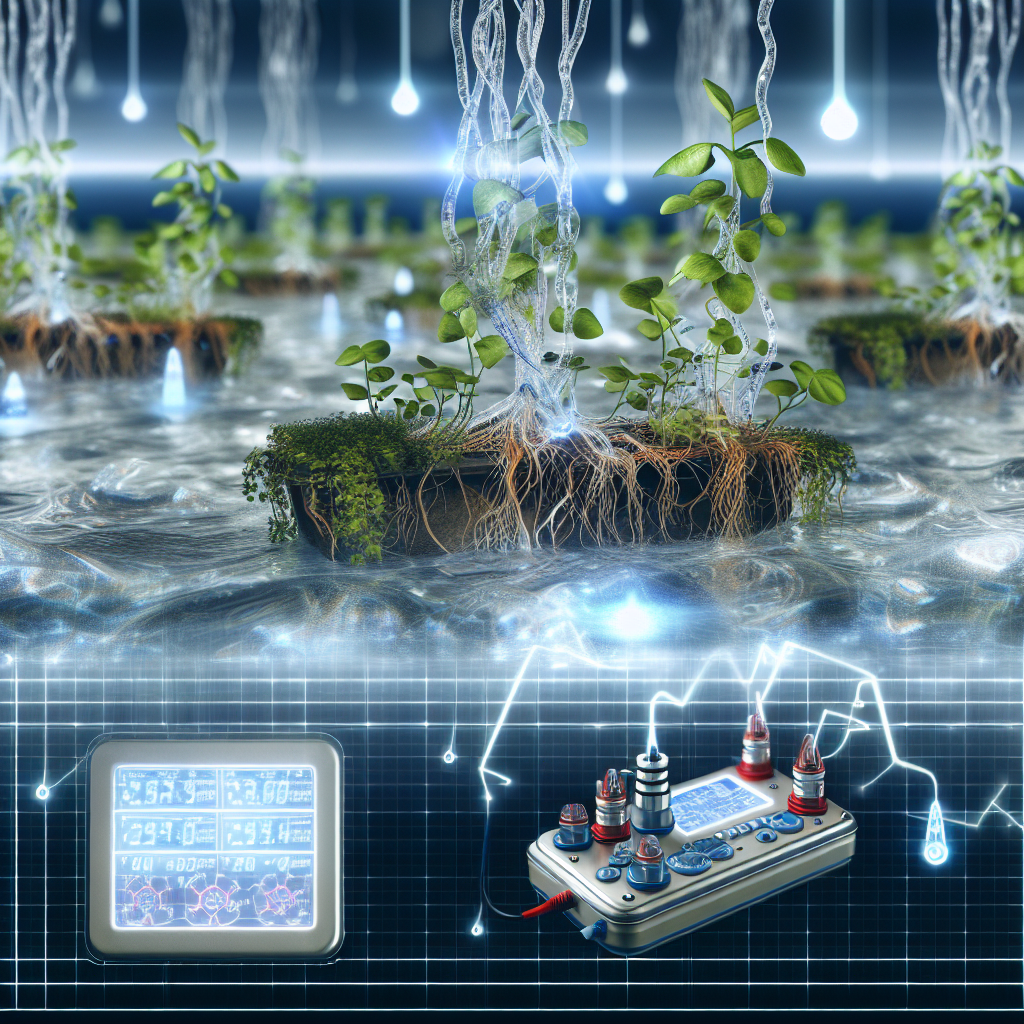Hydroponic Root Zone Electroconductivity – Advanced Management for Recirculating Systems
Introduction
In the ever-evolving world of cannabis cultivation, hydroponic systems represent the cutting edge of controlled environment agriculture (CEA). Among these, recirculating hydroponic systems—where the nutrient solution is continuously recovered, filtered, and reused—offer cultivators the ability to refine precision crop management while reducing water and nutrient waste.
One of the most critical variables governing success in these systems is Electroconductivity (EC), which indicates the total ionic concentration of the nutrient solution. Measured in milliSiemens per centimeter (mS/cm), EC directly reflects how much dissolved nutrient is present, essentially making it a snapshot of the available plant nutrition.
In a recirculating hydroponic system, EC is not static—it fluctuates frequently due to water evaporation, plant nutrient uptake, and the introduction of waste byproducts. Unmonitored EC changes can result in nutrient toxicity, lockout, or osmotic stress, severely lowering the health and productivity of high-value crops like cannabis.
Importantly, EC measured in the reservoir does not always reflect EC at the root zone—the precise microenvironment where roots absorb nutrients. Factors such as microbial activity, root exudates, temperature shifts, and humidity can create localized EC disparities. This makes real-time root zone EC monitoring a significant innovation for serious growers, especially when striving for consistency, potency, and crop steering.
With increased industry regulation and an emphasis on quality assurance, cultivators are turning to advanced gear like root-zone EC sensors, automated dosing systems, and AI-enabled fertigation. These tools allow for nuanced control, enabling growers to respond quickly to changes at the plant-soil interface, enhance yield, shorten flowering cycles, and dial in critical secondary metabolites such as THC and CBD.
This article covers the science behind managing root zone EC in cannabis hydroponics, evidence from recent research, and the tools and methodologies professionals are using to create next-level cannabis with sustainability and profitability in mind.
Features and Supporting Research
For professional growers, optimizing both yield and cannabinoid composition is the ultimate goal. Research confirms that nutrient management—via EC adjustment—can directly influence terpenes and cannabinoids. For instance, a 2021 study in Frontiers in Plant Science found that moderate EC treatments between 1.8–2.5 mS/cm significantly boosted both biomass and secondary metabolite expression in Cannabis sativa L. ([View Study](https://www.frontiersin.org/articles/10.3389/fpls.2021.630222/full)).
Moreover, root zone EC shifts quickly during vegetative and flowering stages based on environmental variables like light spectrum, plant age, and transpiration rate. The University of Guelph highlights that nutrient feedback from the root zone is a more accurate predictor of plant needs than reservoir data alone. Their horticulture research supports dynamic nutrient adjustments aligned with the plant’s lifecycle for healthier, faster-growing cannabis. ([View Source](https://www.uoguelph.ca/oac/news/understanding-nutrient-uptake-cannabis))
In high-frequency fertigation systems using rockwool, coco coir, or clay substrates, root zone EC can become concentrated or stratified, leading to salinity stress. The Journal of Greenhouse Horticulture published findings on how EC accumulation in soilless substrates can hinder nutrient uptake and stunt growth. Maintaining proper EC gradients is key in avoiding these pitfalls. ([View Research](https://www.hindawi.com/journals/ijcb/2020/8038602/))
Implementing root zone EC sensors—like those from [Bluelab](https://bluelab.com/nz/products/monitoring) or [Grodan](https://www.grodan101.com/cannabis-growing/tools-and-monitoring/electrical-conductivity)—enables cultivators to track EC directly adjacent to root tips. This real-time data supports “crop steering,” where EC is deliberately increased during late flowering to stimulate resin production or decreased during early growth to encourage leaf and stem expansion.
Advanced growers are increasingly integrating AI-controlled nutrient systems that use algorithms to understand nutrient uptake, EC, pH fluctuation, and water demand based on environmental variables like VPD (vapor pressure deficit). These systems create a live feedback loop, making real-time adjustments that outperform conventional “set and forget” feeding strategies.
More importantly, EC control helps support batch consistency for medical cannabis producers trying to meet GMP compliance. Smart EC management reduces room for error and helps growers maintain strict phytochemical thresholds needed for therapeutic applications—ensuring each dose is as effective and safe as the last.
Conclusion
Root zone Electroconductivity is not just a metric—it’s a dynamic process central to thriving hydroponic cannabis systems. Mastering it gives cultivators the tools to:
– Fine-tune nutrient delivery and avoid imbalances
– Promote more potent and predictable cannabinoid profiles
– Manage crop stages with precision (vegetative vs flowering)
– Boost overall system efficiency and sustainability
As the cannabis sector leans further into standardized production and environmental accountability, those who fully embrace real-time EC management will have the edge—producing higher yields, safer medicine, and more profitable crops while staying ahead of ever-tightening regulations.
References
1. Frontiers in Plant Science – “Nutrient Regimes Modify Phytochemical Composition in Cannabis sativa L.”
https://www.frontiersin.org/articles/10.3389/fpls.2021.630222/full
2. University of Guelph – “Understanding Nutrient Uptake in Cannabis Hydroponics”
https://www.uoguelph.ca/oac/news/understanding-nutrient-uptake-cannabis
3. Journal of Greenhouse Horticulture – “Electrical Conductivity Dynamics in Hydroponic Substrates Used for Cannabis Cultivation”
https://www.hindawi.com/journals/ijcb/2020/8038602/
4. Bluelab EC and pH Monitoring Tools
https://bluelab.com/nz/products/monitoring
5. Grodan – Substrate Monitoring Systems
https://www.grodan101.com/cannabis-growing/tools-and-monitoring/electrical-conductivity
For more expert cannabis cultivation insights, visit [Bluntys.com](https://bluntys.com)
Summary
Mastering root zone EC in hydroponic cannabis systems allows growers to optimize nutrient delivery, improve cannabinoid profiles, and avoid plant stress. Unlike simple reservoir EC checks, root zone monitoring provides real-time data for responsive, precision crop steering. Research shows EC levels influence both yield and terpene production, especially in closed-loop setups. With tools like EC sensors and AI-driven fertigation, cultivators can ensure consistent, GMP-compliant results while conserving water and nutrients. Implementing dynamic EC strategies makes sense for both boutique artisans and large-scale operators looking to deliver potent, high-quality cannabis sustainably.




